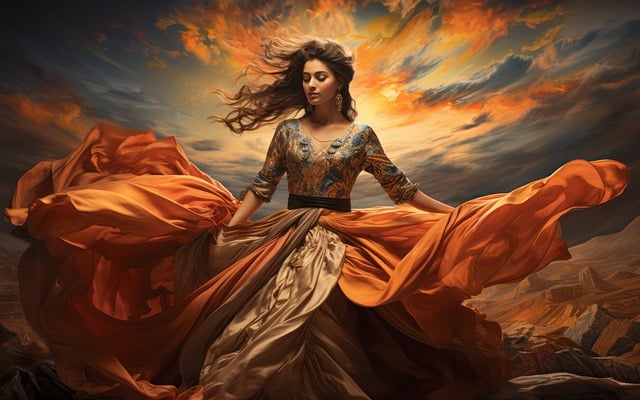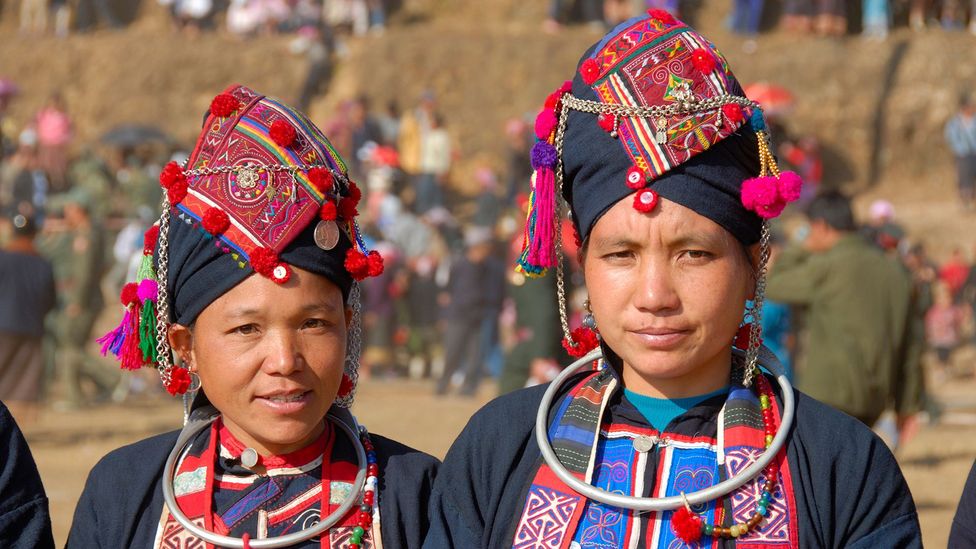
Cultural rituals have long held a captivating allure, offering glimpses into the mysteries and magic of our shared human history. In this article, we embark on a journey to unravel the whispers of the past - exploring the significance and power of these ancient practices.
From mantras and chants that reverberate through time, to the transformative energy of dance, we delve into the profound role rituals play in shaping identity and fostering connection.
By understanding their historical context, we can truly appreciate the enduring legacy of cultural rituals.
Key Takeaways
- Cultural rituals serve to preserve and transmit shared values, beliefs, and traditions, providing a sense of belonging and continuity.
- Symbolic representation through dance, music, and specific actions transcends barriers of time and space, acting as a language and conveying meanings that words alone cannot express.
- Cultural rituals hold deep spiritual significance, connecting individuals to something greater than themselves and offering a sense of transcendence and connection with nature, the divine, or collective consciousness.
- Ancient mantras, chants, and dance have therapeutic effects, inducing meditative states, reducing stress, and promoting relaxation, while also providing insights into ancient beliefs and traditions and connecting individuals to their cultural heritage.
The Significance of Cultural Rituals
The significance of cultural rituals lies in their ability to preserve and transmit shared values, beliefs, and traditions across generations. These rituals serve as symbolic representations of a community's identity and provide a sense of belonging and continuity. Cultural rituals often have deep spiritual significance, connecting individuals to their ancestors, gods, or higher powers. Through these practices, people find solace, meaning, and purpose in the world around them.
Symbolic representation is a key element of cultural rituals. Whether it be through dance, music, or specific actions performed during ceremonies, these rituals communicate complex ideas and emotions that words alone cannot express. They serve as visual embodiments of cultural heritage and act as a language that transcends barriers of time and space.
Furthermore, cultural rituals hold spiritual significance for many communities. They provide avenues for individuals to connect with something greater than themselves - be it nature, the divine, or the collective consciousness. In this way, cultural rituals offer a sense of transcendence and allow people to tap into deeper realms of existence.
In conclusion, the significance of cultural rituals lies in their ability to preserve traditions while also providing individuals with a connection to their pasts and spirituality. These practices foster a sense of unity within communities by transmitting shared values and beliefs from one generation to another. Understanding the importance behind these whispers from the past allows us to appreciate the richness and diversity found within different cultures worldwide.
Exploring Ancient Mantras and Chants
Exploring ancient mantras and chants reveals the profound impact they had on various cultures. These ancient practices were not just mere words or sounds; they carried healing vibrations that were believed to have therapeutic effects on both the mind and body.
The repetitive nature of chanting allowed individuals to enter a meditative state, promoting relaxation, reducing stress, and enhancing overall well-being.

Furthermore, delving into the origins and translations of these mantras and chants uncovers sacred texts that hold deep cultural significance. These texts provide valuable insights into the beliefs, values, and spiritual traditions of ancient civilizations.
By studying these ancient practices, we gain a deeper understanding of our collective human history and the transformative power of sound in shaping cultural rituals. It is through this exploration that we can appreciate the magic and mysteries embedded within these whispers from the past.
The Power of Dance in Cultural Rituals
Dance plays a significant role in cultural practices, acting as a powerful medium for expression and communication within various societies. Ritualistic movements are often explored through dance, with each step, gesture, and posture carrying deep symbolic meaning. These movements are carefully choreographed to convey narratives, evoke emotions, and connect individuals to their cultural heritage. Through dance, participants can experience a sense of belonging and identity as they engage in the shared rituals of their community.
Beyond its expressive nature, dance also holds therapeutic aspects within cultural rituals. It has been observed that engaging in rhythmic movements can promote physical well-being by improving coordination, flexibility, and strength. Moreover, dance allows individuals to release emotional tensions and find solace in the graceful flow of their bodies. This healing aspect of dance is particularly evident in ceremonies or rites where participants seek spiritual or emotional relief.
In conclusion, the power of dance lies not only in its ability to captivate an audience but also in its capacity to convey profound symbolism and offer therapeutic benefits. Cultural rituals that incorporate dance provide a platform for both individual expression and collective unity while fostering personal growth and healing through movement.
Rituals as a Means of Identity and Connection
Rituals serve as a means of fostering a sense of identity and connection within communities. They are imbued with symbolism and spirituality, offering individuals a way to express their beliefs and values.
Through the repetition of specific actions and the use of symbolic objects, rituals create a shared experience that unites participants in a collective sense of purpose. Symbolism plays a crucial role in rituals, as it conveys deeper meanings that transcend everyday life. Whether through dance movements, chants, or the use of sacred objects, rituals tap into the spiritual realm and connect individuals to something greater than themselves.
By participating in these cultural practices, individuals not only affirm their own identities but also establish connections with others who share similar beliefs and values. Rituals provide an avenue for self-expression while also reinforcing community bonds, creating a powerful sense of belonging and unity among participants.
Understanding the Historical Context of Cultural Rituals
Understanding the historical context of cultural rituals is essential for comprehending the significance and evolution of these practices within specific societies. Ritualistic symbolism plays a crucial role in cultural rituals, as it represents the deep-rooted beliefs, values, and traditions of a community. By examining the historical context of these rituals, we can gain insights into how they have evolved over time and understand their relevance in contemporary society.

To delve into the historical context of cultural rituals, it is important to consider several key factors:
Socio-political climate: Cultural rituals often reflect the socio-political climate in which they originated, serving as a means for communities to express their identity and assert their values.
Religious influences: Many cultural rituals have religious origins or are influenced by religious beliefs, highlighting the spiritual significance attached to these practices.
Technological advancements: The evolution of cultural practices can be seen through changes in technology. For example, traditional dance forms may incorporate modern music or costumes.
Globalization and migration: Cultural rituals evolve as societies become more interconnected through globalization and migration. This can lead to the fusion of different traditions and practices.
By understanding the historical context of cultural rituals, we can appreciate how they have shaped societies throughout history and continue to hold meaning in our diverse world today.
Frequently Asked Questions
How do cultural rituals impact individual well-being and mental health?
Cultural rituals have a profound impact on individual well-being and mental health. They contribute to social cohesion by fostering a sense of belonging and shared identity. Additionally, cultural rituals play a crucial role in shaping one's personal and cultural identity, providing individuals with a sense of purpose and meaning in life.
What are some common challenges faced in preserving and passing down cultural rituals to future generations?
Challenges in cultural ritual preservation and transmission difficulties are multifaceted. Factors such as globalization, modernization, and generational gaps pose obstacles. These challenges require innovative approaches to ensure the long-term survival of cultural rituals for future generations.
Are there any cultural rituals that have been completely lost or forgotten over time?
Lost rituals and forgotten traditions are a poignant aspect of cultural heritage. These ancient practices, once integral to communities, have faded away over time due to various factors such as colonization, modernization, and the erosion of traditional knowledge.

How do cultural rituals evolve and adapt to changing societal norms and values?
Cultural rituals evolve through a process of evolutionary changes and societal adaptations. As societies progress, values and norms shift, leading to modifications in rituals to align with the changing needs and beliefs of the community.
Cultural rituals can serve as forms of empowerment and identity, challenging societal norms. Through their symbolism and collective participation, they create spaces for marginalized groups to assert their identities and resist dominant cultural practices.
 SportsHollywoodLifestyleFashionHome & GardenTrendsPrivacy PolicyTerms And Conditions
SportsHollywoodLifestyleFashionHome & GardenTrendsPrivacy PolicyTerms And Conditions
